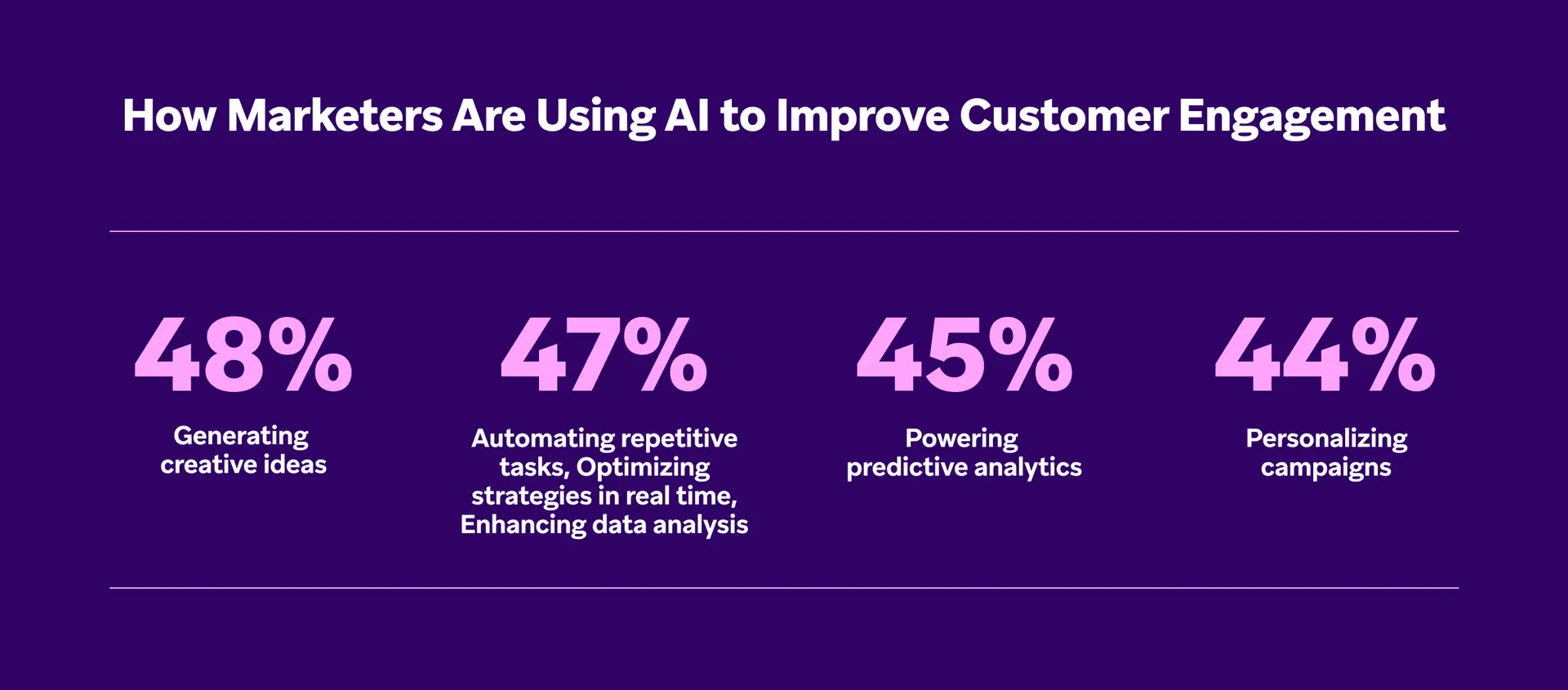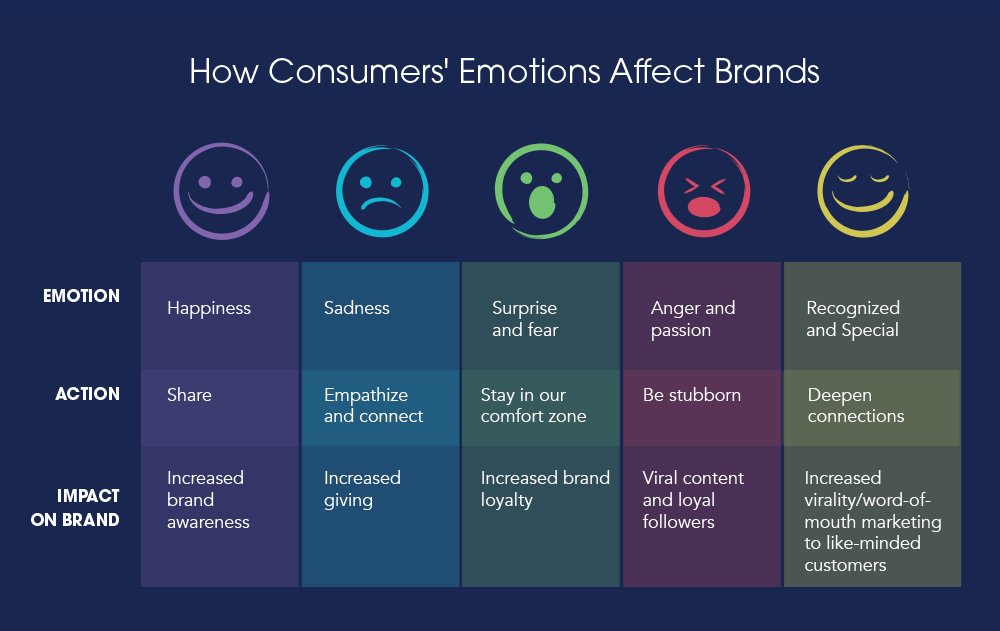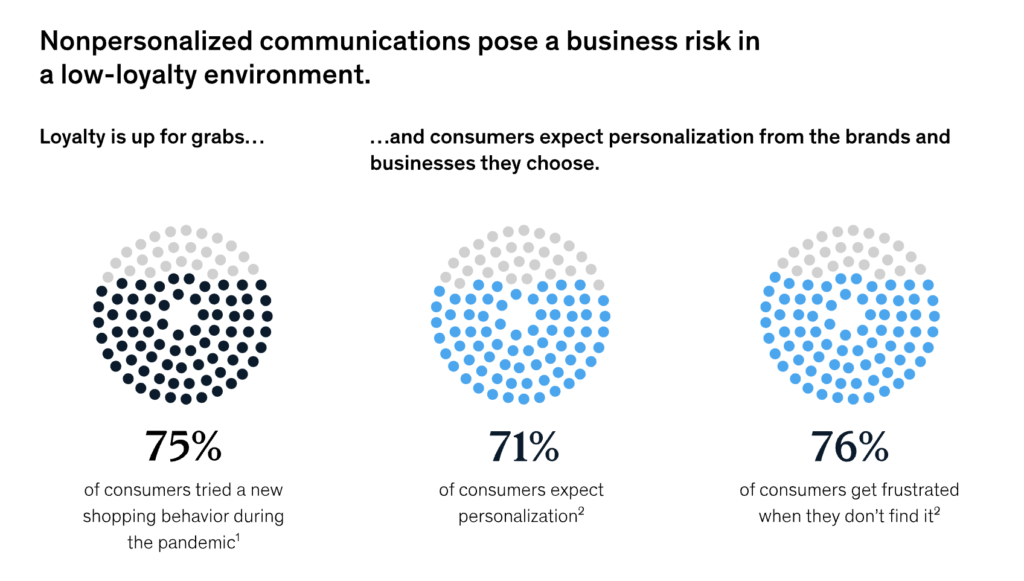When it comes to copywriting, AI tools like ChatGPT have stirred up a lot of buzz. Can AI really help copywriters? Or is it just another overhyped tech trend?
Here’s the bottom line: AI, specifically tools like ChatGPT, has opened up a new way to streamline the writing process, generate fresh ideas, and boost productivity.
It’s not about replacing the copywriter; it’s about giving them an edge—saving time, improving consistency, and scaling their output.
So, yes, copywriters can use ChatGPT, and when they do, they can focus more on strategy and the unique aspects that require a human touch.
That’s why, ahead, I’m going to break down exactly how copywriters can leverage ChatGPT, where it fits into the creative process, and what to be cautious about.
Enjoy!
How Copywriters Use ChatGPT to Write Better
If you’re a copywriter, ChatGPT can be more than just a content generator—it’s a productivity tool that, when used right, can streamline your workflow. Here’s how you can leverage ChatGPT at every stage, from brainstorming to editing, to maximize impact and efficiency.
1. Brainstorming Ideas and Angles
This is one of my favourite uses of AI. Getting stuck on the first step is common, but ChatGPT can jumpstart your brainstorming sessions. You can prompt it with broad ideas related to the client’s industry or niche, and it’ll spit out topic angles, headline ideas, or unique perspectives.
Let’s say you’re writing for a wellness brand. Ask ChatGPT for “trending topics in wellness” or “content ideas for stress relief.” This can give you a handful of ideas to build on.
Need proof? A recent study found that 48% of marketers use AI to support ideation!

2. Outlining Content
Once you have an idea, ChatGPT can help you structure it. Input something like, “Outline for a blog post on the benefits of digital detox for mental health,” and you’ll get a rough roadmap that you can refine. It might not be perfect, but it can save you a ton of time and help you organize your thoughts.
Think of it as a starting point that you can build on. Good outlines are key for SEO because they guide a reader’s journey, so the more structured and logical the flow, the better your content will perform.
3. Drafting First Copies and Snippets
ChatGPT can draft your copy’s foundation, especially for standard sections like “About Us” pages, product descriptions, or simple blog intros. Say you’re writing a landing page for a skincare product.
You can ask ChatGPT, “Write an introductory paragraph for a landing page selling a natural skincare serum.” This saves time on the basics, letting you focus on tailoring the message to the brand’s unique voice.
However, keep in mind: ChatGPT is great for rough drafts, not final versions. Human finesse is still required to make the copy truly resonate with the target audience.
4. Improving Headlines and CTAs
Strong headlines and calls to action (CTAs) are essential for conversions. With ChatGPT, you can quickly generate multiple headline and CTA options to test.
Ask, “Give me 10 headline ideas for a blog about boosting productivity,” or “Generate different CTAs for a sign-up page.” Test these variations to find what resonates best with your audience.
5. Fine-Tuning Tone and Style
Sometimes you’re working with a brand that has a very specific tone—whether it’s quirky, professional, or casual. You can use ChatGPT to tweak tone and style as you refine your copy.
For instance, if a draft feels too formal, try asking ChatGPT to “make this text more conversational.” It can help you achieve the desired tone without rewriting everything from scratch, and it’s great for quickly experimenting with different styles.
6. Keyword and SEO Integration
AI like ChatGPT can be a big help with SEO. It won’t replace a full SEO strategy, but it can incorporate keywords naturally within content. If you’ve got a list of keywords for an article, input them and ask ChatGPT to create paragraphs that flow well with those keywords included.
This makes your copy feel less forced while keeping it optimized for search engines. Just remember to check the density—overloading on keywords can actually hurt SEO.
7. Editing and Polishing
ChatGPT can be a second set of eyes for initial edits. After writing, ask ChatGPT to review a paragraph for grammar, readability, or flow. For example, you could say, “Edit this paragraph to improve readability,” or “Make this sentence more concise.”
It’s proven that AI-powered editing tools have helped writers cut down editing time by 30%, meaning more time for high-value tasks.

While it’s no replacement for a professional editor, ChatGPT can handle quick fixes, stylistic changes, or even shortening long paragraphs. This works particularly well for social media content, where conciseness is key.
8. Generating Variations for A/B Testing
A/B testing is powerful but can be time-consuming when you’re trying to create different versions manually. ChatGPT can generate variations on key copy elements—like subject lines, product descriptions, or email intros—allowing you to quickly set up tests and see what resonates most with your audience.
9. Research Assistance
Copywriters often spend hours researching statistics, market trends, or background information. ChatGPT can reduce this time significantly. While it won’t give you the latest data (since its knowledge cutoff is 2021), it can provide a basic understanding of concepts, saving you time when you’re diving into a new topic.
Use it to familiarize yourself with industries, terminology, or high-level stats, then head to reputable sources for recent information.
Benefits of Using ChatGPT For Copywriting
Using ChatGPT for copywriting can change the game for freelancers, agencies, and in-house teams. When leveraged right, it speeds up the content creation process, enhances brainstorming, and fine-tunes ideas—all while letting you focus on strategy and creativity.
Here’s how ChatGPT can add real value to your copywriting workflow.
1. Speed Up the Drafting Process
Starting from scratch takes time, especially if you’re working with tight deadlines. ChatGPT can draft the foundation of blog posts, social media copy, or email sequences in minutes.
This frees up time to refine, personalize, and inject brand voice, instead of spending hours on initial drafts. Speeding up first drafts lets you take on more projects or devote extra time to strategic planning.
2. Efficient Brainstorming and Idea Generation
Ever get stuck staring at a blank screen? You’re not alone. A study by Wrike found that 60% of writers report experiencing creative blocks.
ChatGPT helps eliminate this hurdle by generating topic ideas, headline suggestions, and content angles. Prompt it with a question like, “What are unique ways to promote a local coffee shop on social media?” and it’ll give you ideas you can refine.
It’s like having a brainstorming partner that never gets tired—perfect for sparking new content directions without draining your creative energy.
3. Enhanced SEO Optimization
SEO is crucial in today’s content landscape, and ChatGPT can help integrate keywords naturally. Instead of forcing keywords into awkward sentences, you can prompt ChatGPT to include terms seamlessly in the content.
The key here is balance. Google’s latest updates emphasize natural language and penalize keyword stuffing, so getting that natural flow is vital. Use ChatGPT as a tool to find creative ways to fit keywords without sacrificing readability.
Combine this with tools like Clearscope or Surfer SEO to ensure your AI-generated content meets SEO standards without going overboard.
4. Generate Multiple Content Variations for A/B Testing
High-converting copy doesn’t just happen; it’s the result of testing and optimization. ChatGPT is excellent for generating quick variations of subject lines, CTAs, or even entire ad scripts.
Instead of creating each version manually, use ChatGPT to give you a few different angles, allowing you to A/B test them to see what resonates best.
5. Consistent Tone and Voice Adjustments
Copywriters know the struggle of shifting tone and style across clients or campaigns. ChatGPT helps you maintain consistency by allowing you to adjust tone quickly. Want the copy to sound more formal or casual? Prompt it accordingly.
It’s proven that making consumers feel recognized and special can lead to more loyalty and word of mouth. Speak in their language and they will share your work. Plain and simple.

6. Easy Edits and Grammar Checks
First drafts aren’t perfect, and neither is AI-generated copy. But ChatGPT is handy for polishing your copy’s grammar, readability, and flow. Instead of hiring a separate editor for quick reviews, run the content through ChatGPT to spot-check grammar or condense sentences.
7. Cost-Effective for Basic Copywriting Tasks
If you’re handling repetitive tasks like product descriptions or meta descriptions, ChatGPT can be a cost-effective alternative to hiring additional staff. You get volume without compromising too much on quality, which is invaluable for agencies or smaller brands that need high output on a budget.
For instance, e-commerce brands often need hundreds of product descriptions for SEO, and manually crafting each one can take hours. By leveraging AI, you save on labor costs while still generating copy that serves its purpose.
8. Time Saver for Research and Fact-Finding
For content creators, research is often the most time-consuming part of the job. ChatGPT can help you get a high-level understanding of topics, so you don’t need to dig through dozens of resources. Ask it about general facts, statistics, or industry trends to save time and jump straight into writing.
While it doesn’t replace in-depth research, it’s a solid starting point for quicker topics. This is especially handy if you’re writing about unfamiliar industries, giving you an initial boost without the typical research lag.
9. Helps Streamline Content for Different Platforms
Each platform has its own style and character limits, which can be hard to manage if you’re doing it manually. ChatGPT can quickly reformat copy to fit specific needs, whether it’s a punchy Instagram caption or a detailed LinkedIn post.
10. Great for Repurposing Content Across Different Formats
Repurposing content is smart for SEO and engagement. ChatGPT can help you adapt a single piece of content into various formats—blogs, social posts, emails, or even video scripts.
If you have a long-form article, ask ChatGPT to break it down into a series of LinkedIn posts, email blurbs, or social media snippets.
ChatGPT Copywriting Limitations to Consider…
Using ChatGPT for copywriting can speed up workflows and generate ideas, but it’s not without its limitations. While it’s tempting to rely on AI for quick content, there are significant drawbacks that any serious copywriter needs to keep in mind.
1. Lacks Nuance and Emotional Depth
AI can mimic human language, but it doesn’t understand emotions or complex human experiences. Good copywriting isn’t just about correct grammar and sentence structure; it’s about creating an emotional connection.
Whether it’s persuading a reader to click “Buy Now” or signing up for a newsletter, effective copy taps into feelings, aspirations, and pain points—things that ChatGPT can only approximate, not truly understand.
2. Can Produce Generic, Repetitive Content
ChatGPT is trained on a vast amount of online data, which means it often regurgitates what’s already out there. If your goal is to stand out, using ChatGPT alone could actually harm your brand.
You risk creating copy that’s generic or lacks originality, which can be a major disadvantage in a saturated market. Originality is one of the top factors that drive reader engagement.
Actionable Tip: Use ChatGPT for initial drafts or idea generation, but make sure to personalize and refine the copy to bring your unique voice and insights.
3. Struggles with Complex or Industry-Specific Topics
ChatGPT does well with general knowledge but stumbles on complex or highly specialized subjects. For example, if you’re writing for industries like finance, healthcare, or law, you need precise language, adherence to regulatory guidelines, and industry-specific insights.
ChatGPT might generate surface-level information but can’t reliably go in-depth with expertise or accuracy.
Solution: Only use ChatGPT for basic research or content outlines in complex industries, and always cross-check facts or statistics with authoritative sources.
4. Risk of Inaccurate or Outdated Information
ChatGPT isn’t connected to real-time data and updates, so it doesn’t always have the latest information. This is critical in fast-evolving industries where yesterday’s information can be irrelevant or even misleading today.
For instance, ChatGPT was last trained on data up to 2021, so if you’re writing about something that’s changed since then, it may provide incorrect or outdated insights.
Google emphasizes the importance of “freshness” in SEO, so relying solely on ChatGPT for fact-based content can actually hurt your rankings.
What to Do: Use ChatGPT as a starting point but verify all facts, stats, and references from up-to-date sources. Especially for news-sensitive topics, always double-check.
5. Fails to Capture Brand Voice Consistently
Brand voice isn’t just about sounding professional—it’s about embodying the brand’s personality, values, and unique language. ChatGPT can mimic various tones, but keeping a consistent voice across different types of content or platforms is difficult.
If you’re aiming for a playful, authoritative, or conversational style, ChatGPT might get it right one moment and fall flat the next.
According to Influencer Marketing Group, consistent brand presentation can increase revenue by up to 23%.

Actionable Insight: Use ChatGPT to draft content but make sure to fine-tune it in your brand’s unique voice. Create a style guide to help maintain this consistency if multiple people are working on content.
6. Limited Ability to Write Persuasive, Conversion-Focused Copy
AI can produce copy, but it’s not a copywriting expert. Persuasion involves psychology, and there’s an art to crafting phrases that genuinely influence behavior. AI can be weak at being aligned with your audience’s psychology.
Conversion-focused copywriting isn’t just about words; it’s about timing, tone, and knowing what to say to push someone further down the funnel. For businesses focused on ROI, ChatGPT may not always hit the mark.
Pro Tip: Use ChatGPT to come up with several CTA options, but choose and refine based on audience insights, A/B testing, and your own expertise.
7. Potential for Plagiarism Concerns
ChatGPT generates responses based on its training data, which can sometimes result in phrases or ideas that are similar to existing content. While it’s generally unlikely to produce outright copied content, there’s always a risk of unintentional overlap with other online materials.
Duplicate content can hurt SEO; Google penalizes pages that appear to be copy-pasting or borrowing heavily from other sources.
How to Handle It: Always run AI-generated copy through plagiarism-checking software, especially if the topic is commonly discussed online. This minimizes the risk of content duplication.
8. No Accountability for Content Accuracy
ChatGPT generates content based on patterns but doesn’t understand accountability. If it produces incorrect information, it’s ultimately the writer’s responsibility, not the tool’s.
Errors in content can damage credibility, hurt brand reputation, and even lead to legal issues in regulated industries. ChatGPT might sound confident, but confidence isn’t the same as accuracy. Users must assume responsibility for verifying every detail.
Takeaway: Use ChatGPT as a helper, not a final authority. Assume full ownership of content accuracy and always review before publishing.
ChatGPT vs Human Copywriters – Who Wins?
When should you lean on ChatGPT, and when do you need a human copywriter? Both have their strengths, but they also have clear differences.
When to Use ChatGPT for Copywriting
- Brainstorming Ideas and Outlines ChatGPT is a great tool for getting past writer’s block. It’s fast, and it can generate tons of ideas on command. Use it to brainstorm topics, develop rough outlines, or come up with headline ideas.
- Writing Simple, Short-Form Content For short, straightforward content like social media posts, meta descriptions, or simple email replies, ChatGPT can be a time-saver. Short-form content doesn’t demand a lot of nuance or deep brand understanding, which means AI can handle it pretty well.
- First Drafts and Idea Generation ChatGPT is useful for rough drafts or initial explorations. It can give you a general structure, which you can then edit, refine, and tailor to make it uniquely yours.
- Data Summaries or Research Assistance ChatGPT can also help summarize research or generate lists based on existing information, saving you from hours of initial data collection. It’s useful for fact-checking (although you still need to verify accuracy) or compiling data for more structured pieces.
- SEO Optimization and Keyword Suggestions AI can help integrate keywords seamlessly throughout a draft, enhancing SEO potential. ChatGPT can also generate related keywords, variations, and ideas for content pillars. This can help streamline the SEO content planning process, letting you identify relevant topics and phrases quicker.
When to Use Human Copywriters
- Crafting Brand Voice and Messaging Your brand voice is something only a human can truly understand and articulate. A copywriter who knows your brand can create copy that resonates with your target audience, reflects your values, and makes an emotional impact.
- Writing Conversion-Driven, Persuasive Content Copy that needs to drive action—think sales pages, landing pages, and email marketing campaigns—requires an understanding of psychology, audience pain points, and persuasion techniques that ChatGPT doesn’t have.
- Handling Complex, Industry-Specific Topics If you’re writing for a specialized field like finance, healthcare, or technology, you need a human copywriter with experience in that industry. ChatGPT can struggle with complex, niche-specific language and may produce surface-level insights or inaccuracies.
- Creating Long-Form, Thought Leadership Content Thought leadership articles require depth, original insights, and research. These pieces go beyond basic information, diving into expert-level analysis or storytelling that establishes authority.
- Copy that Requires Cultural Sensitivity and Nuance ChatGPT doesn’t have a true sense of cultural context, sensitivity, or the subtleties of human interactions. In certain industries or when targeting specific demographics, language needs to be crafted carefully. Human copywriters can adapt to avoid tone-deaf messaging and ensure the copy resonates with the intended audience.
- Content That Needs a Personal Touch If the content needs to reflect personal experiences, stories, or anything uniquely “human,” an AI-generated draft won’t cut it. People connect with personal narratives, unique insights, and human-centric storytelling—elements that AI lacks.
Finding the Balance: A Hybrid Approach
For many businesses, a hybrid approach is the best of both worlds. Use ChatGPT for ideation, simple drafts, and repetitive tasks, then bring in human copywriters to refine, add personality, and handle the more nuanced aspects of your messaging.
You get the speed and efficiency of AI without sacrificing quality or originality. ChatGPT speeds up the process, while human insight ensures the final product truly resonates with your audience.
ChatGPT Copywriting Best Practices
Using ChatGPT effectively as a copywriter isn’t just about asking questions; it’s about steering the tool, refining the output, and layering in the human touch.
Here’s how to make ChatGPT work for you, turning it from a basic assistant into a real productivity booster.
1. Be Specific with Prompts
The more specific you are, the better the output. Instead of asking ChatGPT to “write a blog intro,” tell it, “Write a blog intro targeting small business owners about the benefits of using email marketing, focusing on cost-effectiveness.” Detailed prompts guide ChatGPT to deliver more tailored, relevant results, saving you time on editing and reworking.
2. Use ChatGPT for Ideation, Not Final Copy
AI is fantastic for idea generation. Use it to brainstorm headlines, subheadings, and even content outlines. ChatGPT can suggest multiple angles on a topic, helping you find a fresh perspective. Don’t expect it to give you polished, ready-to-publish content.
The most effective way to use ChatGPT is to get a rough draft or outline and then rework it. You’ll add the unique insights, stories, and examples that make your content engaging.
3. Layer in Brand Voice During Edits
ChatGPT writes in a neutral tone by default. If your brand has a unique voice—whether it’s friendly, authoritative, or quirky—make sure to layer that in during your edits. Review each output and tweak the language, tone, and phrasing to match your brand’s personality.
4. Fact-Check Everything
AI doesn’t “know” facts; it predicts words based on patterns, which means it can be confidently wrong. Use ChatGPT to structure ideas and make suggestions, but always verify any stats, claims, or factual details.
5. Set Up Templates for Consistency
If you frequently produce similar content types, create a template or structured prompt to guide ChatGPT. For instance, if you’re always writing product descriptions, set up a standard prompt: “Write a product description for [product name], focusing on [features] and [benefits]. Target audience: [audience].”
This reduces variability and helps keep your content consistent. Reusable templates also save time, helping you scale your content production without sacrificing quality.
6. Use It for Research Summaries
ChatGPT can help you sift through large amounts of information quickly by summarizing research or data. It’s especially useful for summarizing articles, reports, or customer reviews.
Use these summaries as background info or to identify key points you want to include in your copy. However, treat this as a starting point; AI summaries can miss nuances, so read the original material if it’s central to your content.
7. Test, Analyze, and Refine
ChatGPT can give you variations of copy in seconds. This makes it a powerful tool for A/B testing. For example, you can ask it to create different versions of a headline or CTA, then test these variations to see which performs better.
8. Always Add Personalization
AI-generated content can feel generic. Your job is to make it feel personal. According to McKinsey, 71% of consumers expect a personalized experience.

When you use ChatGPT, think of it as a draft that needs a layer of empathy, real-world examples, or tailored messaging that resonates with your specific audience. This is especially important in content like emails or social media posts, where connection is key.
9. Use ChatGPT for Repurposing Content
Got a long-form blog post? Use ChatGPT to help you break it down into social media snippets, email blurbs, or infographic copy. Repurposing extends the life of your content, letting you reach different segments without creating something new from scratch.
10. Don’t Forget Legal and Ethical Checks
When you use AI for content, you’re responsible for any inaccuracies or biases. If you’re in a regulated industry, like healthcare or finance, always review AI-generated content for compliance.
Ethical checks are equally essential. Avoid making AI-produced content sound like it’s coming from a real person if it’s not.
11. Review, Refine, and Repeat
AI is a tool, not a substitute for your expertise. Treat each output as a first draft, then refine it. Check for fluency, clarity, and flow. Ask yourself: Does this serve the reader’s intent? Does it sound like something I would actually say?
Refine until the output aligns with your standards. ChatGPT can help you produce more content, but your review and editing will ensure that the content is high quality, accurate, and aligned with your goals.
Using ChatGPT as a copywriter means striking a balance between AI efficiency and human creativity. Master these best practices, and you’ll be able to amplify your productivity without sacrificing the quality and authenticity your audience expects.
Final Thoughts on How Copywriters Use ChatGPT
Embracing AI in copywriting isn’t about choosing between human creativity and machine efficiency—it’s about leveraging both. AI tools like ChatGPT can supercharge productivity, cut down on mundane tasks, and provide quick inspiration, but they lack the nuanced understanding and unique voice that skilled copywriters bring to the table.
But remember, great copywriting is still about understanding your audience, crafting messages that resonate, and building relationships. That’s where the real value lies, and no AI will ever replace that. When you master using AI in this way, you’ll amplify your impact, creating content that’s both efficient and deeply effective.
Schedule a free consultation to learn more about my marketing services that will help your business drive more revenue.














